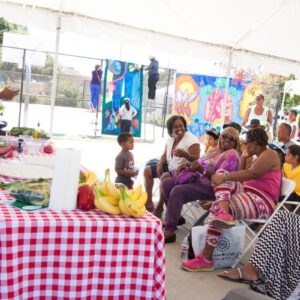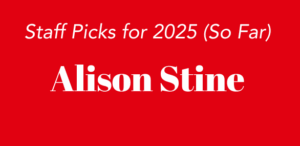
As nonprofit leaders confront shrinking budgets, shifting funder priorities, and a growing divide between mission and means, one thing is clear: Survival alone is not enough. This moment demands imagination.
More specifically, it demands Black imagination, a frame of thinking that not only decolonizes the mind but centers storytelling, community, and play, while calling us in to envision what is possible. A concept that is often used in the fields of art and design, Black imagination is not just performance; it is practice. It is not simply aesthetics; it is strategy.
What if nonprofit leadership stopped treating imagination like a luxury and started seeing it as critical infrastructure?
In many of our organizations, creativity is celebrated externally, through programming; in youth engagement; or woven into diversity, equity, and inclusion statements. But internally, it’s often stifled by urgency culture, bureaucracy, and fear. These tensions reveal a deeper truth: Most nonprofits are designed to manage risk, not to dream. And yet, if we’re serious about transformation, we must make space for both.
Planning from Fear
Let’s be honest: Fear has been a silent architect in how we lead. Strategy sessions often begin with worst case scenarios: What if we lose funding? What if this hire doesn’t work out? What if we can’t serve our community the way we promised?
Under the guise of caution, fear shapes policy, dilutes programming, and drives decision-making. But fear is also archival knowledge–a record of our survival; of our institution’s living, breathing testament to its impact, experiences, and the work it has carried out. It holds the accumulated memory of how we’ve navigated crises, shown up for our communities, and adapted over time. It’s not just history; it’s a strategic snapshot of how we’ve made our impact, and it can act as a launching point for what comes next.
What if nonprofit leadership stopped treating imagination like a luxury and started seeing it as critical infrastructure?
Stored in our bodies and our organizations like muscle memory, fear is meant to protect us. But too often nonprofit and movement leaders build entire strategies on that foundation. Even when those strategies work, they rarely leave room for dreaming.
Planning from fear can look like:
- Writing vague mission statements to avoid leaving anyone out
- Designing general programs instead of boldly naming our purpose
- Creating human resource policies rooted in distrust rather than growth
- Relying on consultants out of fear that internal teams aren’t capable
- Shaping grant language solely around funder expectations instead of community needs
These aren’t just cautious choices; they’re concessions. And they erode possibility.
Fear-based planning may build a house, but it’s a house of disorganization, disappointment, and doubt. It puts people on edge, inviting insecurities and emotional baggage to sit with us, turning every meeting into a site of stress and scarcity.
So, what if we planned from possibility instead?
Planning from Possibility
Black imagination has always been a tool for making a way out of no way. My ancestors envisioned freedom in bondage, cultivated joy in scarcity, and built wholesome and eclectic cultures amid erasure. Imagination has always been a form of resistance—a portal to futures not yet birthed.
Today, that same spirit lives in the strategies we courageously design. When I support organizations through crisis or transition, one of the first questions I ask is: What are you afraid of?
Naming fear aloud, in community, disarms it. And once it’s disarmed, imagination has room to breathe.
Two elements are often missing [in planning]; storytelling and play. For many teams, it feels taboo to invite these elements into strategic spaces.
Consider a nonprofit facing major funding cuts: Planning from fear operates out of a mindset of: “We’re losing our biggest funder. We can’t afford risks.” The resulting strategy centers on layoffs, program cuts, innovation paused. Common fear-based language might sound like: “We have to scale back before things get worse.” And the most common outcome is low morale, stalled mission, and operating in survival mode.
What would planning from possibility look like in this context? How about a mindset of: “This is a chance to realign with our purpose.” Strategy might look like: “Reimagine program delivery. Invest in storytelling. Build new partnerships.” Possibility-based language might sound like: “What new opportunities might this unlock?” And the likely outcomes are different as well: renewed energy, stronger identity, new allies.
Planning from the standpoint of possibility isn’t naive; it’s courageous. It is based on the belief that our communities and teams are strong enough to handle truth-telling. This conviction empowers us to cast bold visions and craft strategies deeply rooted in our purpose, knowing they will support our vision and align with our strategy.
Storytelling as Strategic Infrastructure
As the Bridgespan Group reminds us, “Stories can shape people; they can inspire them to think and act differently. Stories are what can connect your nonprofit’s community, funders, beneficiaries, and employees with your cause and vision.”
In my consulting practice, Fearless Spaces, I’ve supported teams through visioning sessions, strategic brainstorming, and thought partnership. Across the board, two elements are often missing: storytelling and play.
For many teams, it feels taboo to invite these elements into strategic spaces. But these practices are essential. That’s why I incorporate storytelling exercises and icebreakers to build community and ground collective work; they disrupt the usual and make room for creativity.
We see this in many cultural traditions:
- Indigenous communities use circles to restore after harm has occurred and build community.
- Campsites use fireside stories to pass on culture and camaraderie.
- In Black communities, we form circles while dancing, grieving, celebrating, or speaking life into one another.
The common threads? Play, community, and storytelling. When you invite others into that space, you invite them to dream.
I often begin sessions by inviting people to open up through a story. Then, as the creative energy builds, I pose bold, imaginative questions:
- What would this look like if we didn’t lead from fear?
- What if we centered our joy?
- What’s the most freeing outcome we can imagine?
Storytelling can take many forms: participant journeys, community narratives, or anecdotal reflection. You’ll often find that your organization is already doing this in your communications and development strategy. So, if you feel hesitant to lean in, remember that you already know how to do this. I’m simply challenging you to further leverage this tool in your leadership, decision-making, and team building.
Activities that emphasize storytelling and play aren’t fluff. They invite ease, and ease creates the conditions for creativity.
It is also important to highlight how organizations in this process can, by mobilizing archival knowledge, transform institutional fear into a living, strategic tool—an evolving memory of values, lessons, and decisions to guide action. Archival knowledge is more than documentation; it is a strategy that draws on continuity as inspiration and centers culture-building, intention, and imagination.
When organizations root their practices in memory, they honor their histories while creating space for innovation. This knowledge doesn’t sit passively in a file or cloud drive; it moves, breathes, and informs. It becomes the blueprint that allows teams to dream responsibly, act collectively, and move forward with grounded intention, making choices not out of fear or urgency, but from a place of purpose, alignment, and clarity.
How One Organization Found Its Way
This sounds good, but how does this work in practice?
Here’s one example: An organization I worked with, which I am keeping anonymous to preserve confidentiality, faced an identity crisis. After operations had been halted for two years, the organization was reopening. The newly reassembled staff, which included only two of the original team members, felt unsure if they shared a common vision. They knew a rebranding and reimagining were necessary, yet feared past failures would overshadow any forward momentum.
Early efforts toward convening and rebranding centered on what had gone wrong, rather than what was possible. As a consultant, I employed an eight-session transformation process rooted in intentional play, transparency, and collective dreaming.
Each session was structured to begin with playful icebreakers, which slowly shifted the tone of the group from uncertainty to curiosity. We openly named the fear, harm, and grief that had lingered and then pivoted toward possibility. Using guided brainstorming, storytelling, and collaborative online tools, we revisited the organization’s former values—using them as a launchpad for renewal.
There’s room for crisis planning certainly, but it must sit alongside possibility. And, to make space for both, creativity must be in the mix.
Initially hesitant about this process, the team struggled to dream, but by the fourth session, the approach began to catch on. The team co-created a bold new mission and vision grounded in inclusivity, accessibility, and cultural enrichment. What began as distress evolved into expansive, values-driven planning, transforming the organization into one capable of leading with hope instead of limitation.
This transformation did not happen overnight, and it wasn’t magic. It was the result of creating consistency and intentional space for imagination, where we named fear directly rather than letting it take a seat at the table.
When the Roof Caves In: The Institute of Black Imagination’s Journey
While some organizations need structured facilitation to break through paralysis, others find their breakthrough in moments of crisis that force a fundamental recalibration. The Institute of Black Imagination, a nonprofit dedicated to cultivating and platforming Black creativity and thought leadership, discovered that the very thing that seems like a hurdle can become the beginning of something more aligned and powerful.
The group had an ambitious vision: to open a physical space that would bring Black imagination to life through art, thought, and built design, while also seeking to transform their powerful podcast into an immersive, real-world experience.
Yet despite this inspiring mission, the organization was immediately met with layered challenges—permit delays, a collapsing roof, and the persistent structural fragility so many Black-led organizations face when attempting to scale with limited resources. With an operating budget of $250,000, and few operational systems in place, the weight of turning inherited legacy and boundless creativity into a tangible institution sparked tension, a sense of scarcity, and fear.
While the podcast had built visibility, it inadvertently became the sole product of focus for the team. Meanwhile, opening their physical space remained the goal, but the path toward it lacked clarity and infrastructure.
Across the team, burnout and doubt seeped in. They swung back and forth between ideas, trying to please funders and fulfill promises, but without a guiding strategy, play felt like a distraction and storytelling was underutilized. A scarcity mindset took hold. The breaking point, both literal and symbolic, came when the roof of the physical space being renovated caved in.
Unlike previous organizational pivots, the post-collapse shift came with a new tone: one of intentional clarity, community, and reflection. Using this moment as a point of much needed redirection, leadership stopped scrambling for the next solution and instead rooted itself in the present work. They invited the team, an eclectic mix of emerging and experienced creatives, into the co-creation of the organization’s values, theory of change, and a five-year roadmap.
Meetings were transformed to start with leadership posing questions like, “In our wildest dreams, what would this look like?” When fear stopped being the compass, the staff were able to plan—and develop new programs to support Black creatives.
Inviting Creativity to the Table
What do these examples tell us? There’s room for crisis planning certainly, but it must sit alongside possibility. And, to make space for both, creativity must be in the mix.
Let’s stop treating imagination like whimsical fluff. Instead, let’s honor it as fuel. To do this, I leave you with four practices to nurture Black imagination on your team:
- Lean into creativity: Build dreaming into strategic plans, staff retreats, and leadership spaces.
- Ask bolder questions: “What’s feasible?” and “What’s freeing?”
- Make room for storytelling and play: Encourage imaginative thinking without requiring immediate outcomes.
- Fund imagination: Use grants not just to fill gaps, but to dream aloud. Ask: “What would it take to make this sing?”
We don’t need more perfect plans. We need braver questions.
We don’t need more rigid roadmaps. We need more story circles.
Black imagination is more than a concept. It’s a strategy. It’s a legacy. And if we let it, it can be the key to building bountiful futures.














